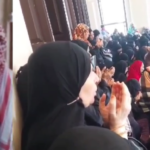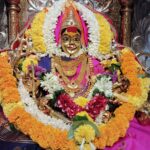Anupama Nair
In the last part, I spoke about the great city of Chittor & one of her greatest sons – Bharat ka veer putra – Maharana Pratap. In this part, I am going to talk about his battles with Akbar and his beloved horse Chetak.
Akbar sent several emissaries to Mewar to get Rana Pratap to agree to sign a treaty, but Pratap was only willing to sign a peace treaty whereby the sovereignty of Mewar would be intact. In 1573, Akbar sent six diplomatic missions to Mewar to get Rana Pratap to agree to his orders, but Rana Pratap turned down each one of them. The last of these missions was headed by Raja Man Singh, the brother-in-law of Akbar. Maharana Pratap, was infuriated that his fellow Rajput was with someone who had forced the submission of all Rajputs. The lines were completely drawn now — Akbar understood that Maharana Pratap would never submit and he would have to use his troops against Mewar. Akbar’s course of action like any tyrant was first try with false promises of peace, if it did not work attack by treason.
With the failure of efforts to negotiate a peace treaty in 1573, Akbar blocked Mewar from the rest of the world and alienated Mewar's traditional allies, some of whom were Maharana Pratap's own kith and kin. Akbar then tried to turn the people of the Chittor district against their king so that they would not help Pratap. He appointed Kunwar Sagar Singh, younger brother of Pratap, to rule the conquered territory. However, Sagar, regretted his own treachery, and committed suicide with a dagger in the Mughal Court. Shakti Singh, one of Pratap's younger brothers who was now with the Mughal army, is said to have fled the Mughal court temporarily to warn his brother of Akbar's actions.
In preparation for the inevitable war with the Mughals, Maharana Pratap decided to change the city of his administration. He moved his capital to Kumbhalgarh, where he was born. He commanded his subjects to leave for the Aravali mountains and leave behind nothing for the approaching enemy – and the war would be fought in a mountain terrain which the Mewar army was used to but not the Mughals. It is a testament to the respect the young king had amongst his subjects that they obeyed him and left for the mountains. The Bhils of the Aravalis also supported him. The army of Mewar now raided all the Mughal trade caravans going from Delhi to Surat. A section of his army guarded the all-important Haldighati Pass, the only way to get into Udaipur from the North. Maharana Pratap himself undertook several penances, not because his finances forced him to do so, but because he wished to remind himself, and all his subjects, why they were undertaking this pain — to win back their freedom, their right to exist as they wished. He made a promise to eat from leaf-plates, would sleep on the floor and would not shave. In his self-inflicted state of penury, the Maharana lived in mud-huts made from mud and bamboo.
The famous battle of Haldighati was fought in 1576, with 20,000 Rajputs against a Mughal army of 80,000 men commanded by Raja Man Singh. The battle was fiercely fought, and there was no decisive result which was a matter of great astonishment to the Mughals. Maharana Pratap's army was not defeated even though his army was surrounded by the Mughal soldiers. It is said that at this point, his estranged brother, Shakti Singh, appeared and saved the Rana's life. The greatest casualty of this war was the loyal, horse Chetak, who gave up his life trying to save his master.
Like the brave sons and daughters of Bharat Maa, even the animals are patriotic and love their master. Chetak is one of the most famous horses in the history of Mewar. “The bravery and resilience of this stallion is sung in ballads and written in many books. Texts define “Chetak as a horse that was truly devoted to its master and brave enough to save his master from the enemies”. The folklores define “Chetak as a brave and obedient animal who fought for his beloved Pratap till his last breath”. Maharana Pratap’s Chetak is undoubtedly a personification of love and valor for his master.
In between the course of the battle, an elephant’s tusk tore through one of Chetak’s rear legs and crippled or immobilized it. “To save Pratap's life, the injured Chetak galloped away from the battle field and covered a safe distance. But he finally collapsed after jumping over a 22 feet stream and died”. You might ask why Chetak, Badal (Rani Lakshmi Bai), Malhari (Baji Rao) and Krishna (Shivaji Maharaj) is as famous as their masters and not horses of other kings? The answer would be “Chetak , Badal, Malhari, or Krishna were associated with Rana Pratap, Rani Lakshmi Bai, Baji Rao and Shivaji Maharaj and hence raised to glory while the other kings were lesser known and so were their horses”. In Udaipur, Chetak’s statue is erected at Moti Magri and Chetak Circle.
In the next part I will talk about the later part of his life.
(to be continued…)

































Yes he will always live in our memory.
Yes he will always live in our memory.
Great work Anupama.
Great work Anupama.
Great work Anupama
Great work Anupama
Great article written by a lover of history
Great article written by a lover of history
Great article written by a lover of history
Bharat ka veer putra